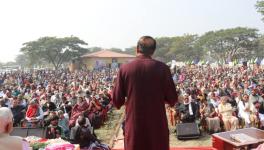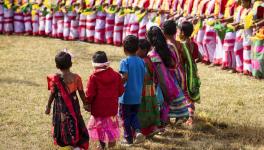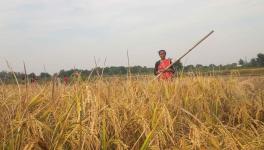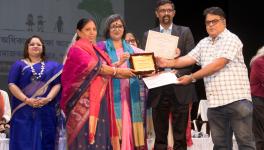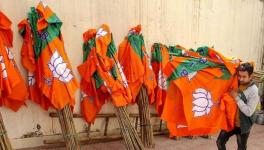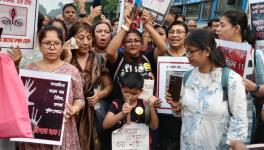Bengal: Death, Despair Stalk Shabartola People in Purulia Village
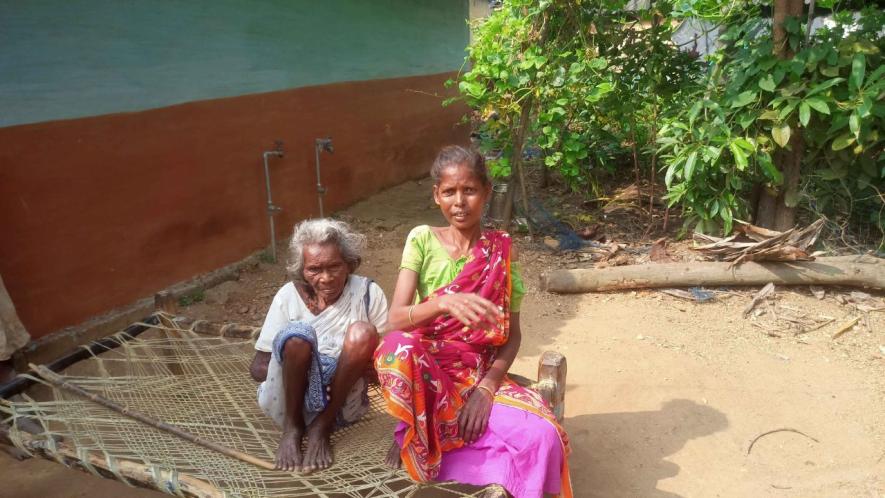
Tiya Shabar, the widow of Kangso Shabar, who died of alleged starvation.
The shadow of an impending disaster looms over a part of Harjora village, located in Barourma Gram Panchayat under the Balarampur Block of Bengal’s Jangalmahal region in Purulia district. The 32 families of the primitive tribal Shabar community residing in this remote area are haunted by the spectre of death and despair.
Harjora village is situated 620 kilometres from Kolkata and 32 km north of the district headquarters in Purulia. At the far end of the village lies the settlement known locally as "Shabartola," which is home to these 32 Shabar families.
Living in virtual isolation, these families have managed to survive all odds, but for how much longer? Will the Shabar people of this village physically disappear, reduced to mere memories? Critical questions arise: Why have no children from Shabartola attended school for several years? Why are they perpetually deprived of basic education? These concerns reverberate among the residents of this marginalised community.
Over the last three months, Harjora has witnessed tragic deaths of several villagers due to alleged malnutrition. Among the deceased are Kalipada Shabar (68), Suku Shabar (55), Kangso Shabar (45), Sankar Shabar (35), Mathur Shabar (55), Gopal Shabar (35), and Ashoke Shabar (50). Most recently, on November 11, Bhakom Shabar allegedly succumbed to starvation. Youths like Buddheshwar Shabar (35) and Peku Shabar (24) are bedridden, battling critical health conditions caused by prolonged malnutrition.
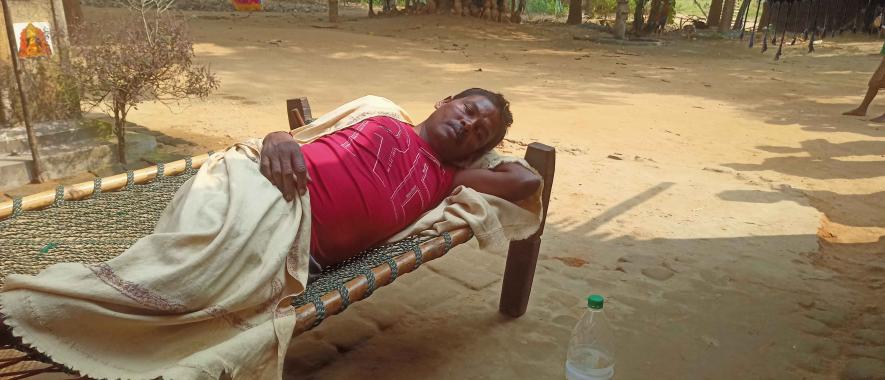
Buddheswar Shabar is in critical conditionw.
“My husband starved to death. We have no jobs and no access to ration because we don’t have Aadhaar cards. What do we eat to survive?” Tiya Shabar, the widow of Kangso Shabar, told tis reporter. She said most villagers are weak due to starvation that diseases consume them, and they lack the resources for treatment. "People are dying one after another," she added.
This grim reality is the daily experience of Shabartola. Residents say both the panchayat and the district administration are aware of their plight. Officials from the district administration have even visited the village and observed the appalling conditions, yet no substantial measures have been implemented to alleviate their suffering.
"Why such an attitude of the panchayat and administration toward the primitive Shabar people?" several villagers asked this reporter while recounting their grievances.
Plight of the Tribal Shabar Community in Harjora Village
Harjora village in Purulia district, located 15 km from Balarampur and 5 km north of Urma Hattola (a local market), is home to a diverse population, including general and Other Backward Classes (OBCs), most of whom are poor labourers.
About 70 years ago, the Shabar tribal community settled on the outskirts of this village, living in extreme poverty and facing near-complete isolation from the rest of the villagers. They survived on a day-to-day basis, working whenever they found opportunities.
However, this isolation began to diminish following the Left Front government coming to power in 1977. “The indigenous Shabar people were integrated into mainstream society during that time. They were given permanent land settlements (pattas) and houses under government projects. Regular employment opportunities were also provided through the panchayat,” Sahadeb Mahato, a former pradhan (head) of Barourma Gram Panchayat, told this reporter.
Several residents of Shabartola, including middle-aged women like Binanda, Sarathi, and Sabola, corroborated these claims. “When the Left Front was in power, we received land pattas and houses from the panchayat. Many of us even got jobs.” said Binanda Shabar.
Sarathi, along with local youths like Ganesh Shabar and Buddheshwar Shabar (who are currently battling severe illness), recalled working on projects such as renovating Kalimoti, Futur, Maji, and Fagur Geria ponds under the Mahatma Gandhi National Rural Employment Guarantee Act (MGNREGA). They also contributed to road construction and land levelling for cultivation. “There was guarantee of work then. Now, we haven’t had work for four years,” said Ananda Shabar.
The residents say the situation drastically changed after the Trinamool Congress (TMC) came to power in 2011. According to Bijoy Shabar, a youth, “When we approached the current panchayat for work, they told us the 100-day work scheme had stopped. We asked if they could arrange alternative jobs, but they didn’t respond. They don’t even speak respectfully to us.”
Adding to their woes, mechanisation has reduced traditional labour opportunities. Previously, during paddy harvesting season, Shabar men and women worked as farm labourers. Today, machines have replaced them.
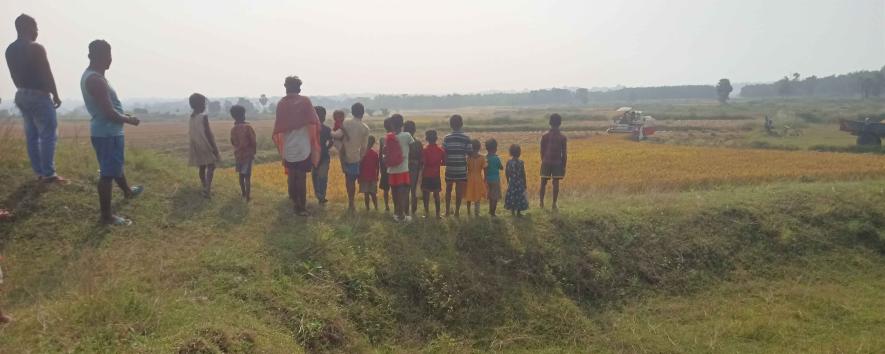
No paddy harvesting work for Shabartota people, as machines are being used for harvesting.
A painful scene unfolded in Harjora as Shabar youth and children could be seen standing by the edge of the fields, watching machines harvest paddy. Their expressions, filled with despair and longing, underscored their helplessness.
While observing the harvesting, some youths approached the reporter and pleaded, “Please tell us how we can survive? How can we ensure two meals a day for our families?”
Acute Food Crisis in Shabartola
The Shabar community is grappling with a severe food crisis as their economic conditions continue to deteriorate. With no employment opportunities in the local or neighbouring areas, many youths have been forced to migrate to other states as labourers. However, due to financial exploitation, low wages, and harsh working conditions, many returned home in ill health.
“We went to Odisha, Bengaluru, Mumbai, and Delhi to work as migrant labourers. The contractors didn’t pay proper wages, and we had to work 10-12 hours a day for meagre pay. We fell sick and had to return to the village,” said Lalmohan Shabar and Gurucharan Shabar. They also recalled the disappearance of Damon Shabar, a youth who left for Odisha three years ago and remains missing.
In such dire circumstances, the government’s ration food supply was the only lifeline for the community. However, most of the 32 families in Shabartola are unable to access ration supplies due to their inability to link Aadhaar cards with digital ration cards. Many residents lack Aadhaar cards, resulting in only one or two members per household receiving rationed food, leaving children and others without any support.
“We survive on half meals, and the hardest part I s facing the children when they cry out in hunger. What do we tell them? If this continues, many of us won’t be alive when you return,” said a tearful Sarothi.
It was 2 p.m, and no cooking activity was visible in the village. “If we manage to get some foodgrains, we cook it at night, and that meal lasts until the following evening,” said Ganesh. The elderly in the community often forego their share of food for the younger ones.
Unable to bear hunger, 60-year-old Ananda Shabar left home three days ago in search of food. He was rescued by his son, Khuku, near the village river bank last Friday (November 15). When approached, Ananda looked blankly at this reporter, unable to utter a single word.
For drinking water, the 32 families in Shabartola rely solely on a single tube well. A piped water tap was installed a year ago, but the supply lasted only on the day of its inauguration.
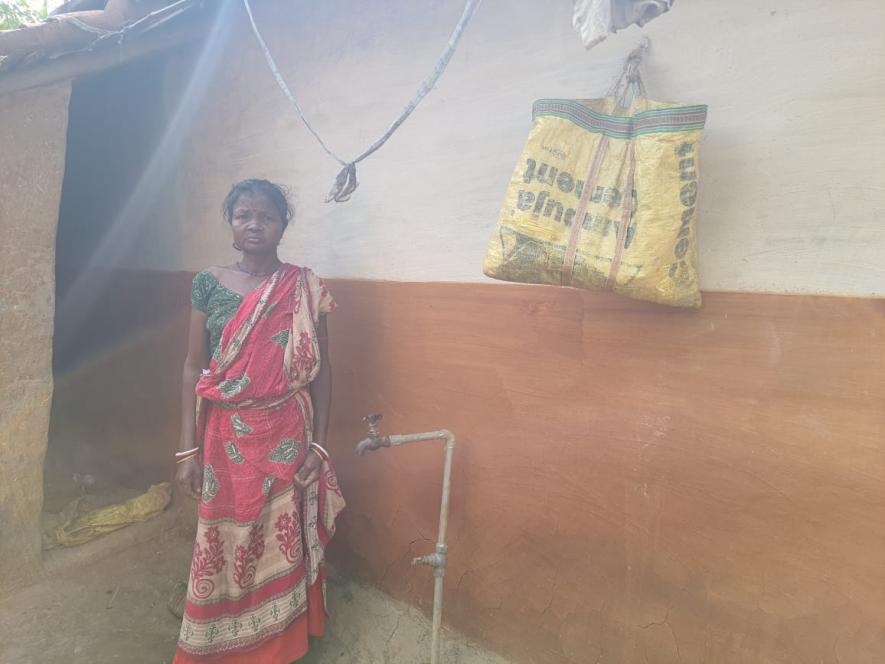
No drinking water flows from the pipeline water tap at Shabartola area.
“On the day the tap was inaugurated, government and panchayat officials handed buckets to the women and clicked pictures of them collecting water. Since then, no water has flowed from the taps. The pipes now lie abandoned,” Thakurmoni Shabar told this reporter.
Education Scenario
Children in Shabartola are also unable to attend school due to the lack of Aadhaar cards, which have been mandated by the government for school admissions. Despite their eagerness to study, boys and girls are deprived of education. Earlier, children from the area attended school regularly. Harjora village has a primary school, and Sagama village, located nearby, has a secondary school.
In 2011, Nepala, a youth from Shabartola, managed to pass secondary school but he now wanders aimlessly without opportunities for further education or employment. From morning to evening, children can be seen roaming around or playing within the confines of Shabartola, excluded from mainstream society.
Housing Conditions
Most homes in Shabartola are in ruins, with broken walls and roofs covered by tarpaulin sheets. These cramped and unsafe dwellings are unfit for habitation.
“The names of these residents are not included in the beneficiary list for the Pradhan Mantri Awas Yojana. A month ago, we went to the District Magistrate’s office to submit our demand for housing. Although officials from district and block levels visited the area to assess the situation, no action has been taken,” said Jiten Maji, a local worker of the Communist Party of India (Marxist). He said even in the recent survey under the Awas Yojana, not a single person from Shabartola was included.
Health Crisis
The people of Shabartola are suffering from chronic malnutrition due to severe food shortage. This has led to widespread physical ailments, particularly liver and chest-related diseases. Many residents resort to consuming alcohol as a coping mechanism, often spending their meagre earnings on it.
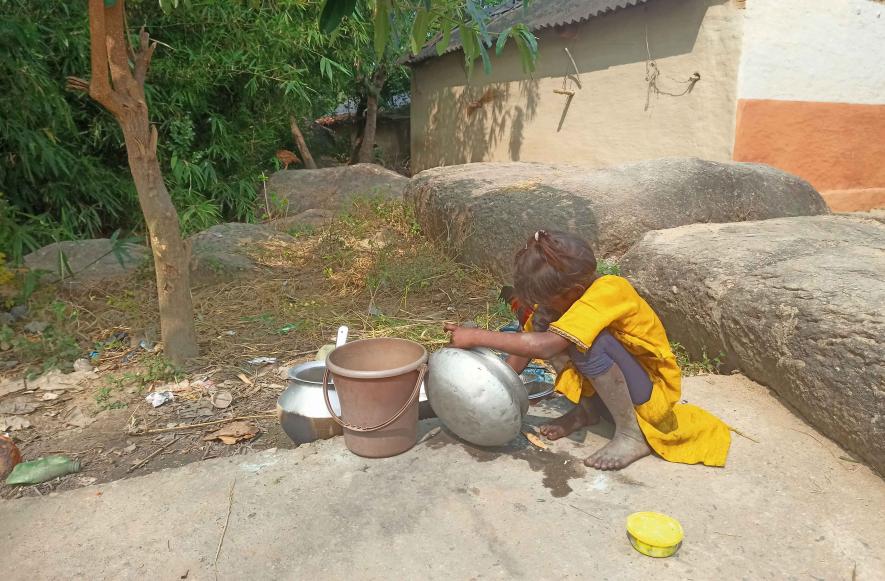
Children of Shabartola village cannot go to school due to lack of Aadhar cards.
“Every family here suffers from malnutrition. With no access to proper food or medical care, desperation has driven many of them to drink alcohol, worsening their health,” said Ganesh Shabar.
The nearest hospital is 8 km away in Bansgor, but medicines are rarely available. “We lack the financial means to buy medicines or pay for treatment,” said Bijoy Shabar. He said people like Sahadeb Mahato, the former panchayat chief, and Jiten Maji have stepped in to provide assistance by taking patients to the Purulia Medical College and covering their treatment costs.
Despite assurances from the Balarampur Block Development Officer (BDO) Sougato Choudhury that Aadhaar cards will be arranged to ensure access to ration supplies and medical aid, the residents remain skeptical. “We’ve heard such promises many times before,” said Bijoy.
All said and done, what is clear is that the Shabartola community in Harjora village, nestled in the remote forests of Bengal’s Jangalmahal region in Purulia district, remains starkly disconnected from basic amenities and opportunities of modern civilisation.
The writer covers the Jangalmahal region for ‘Ganashakti’ newspaper in West Bengal. The views are personal.
(All pictures by Madhu Sudan Chatterjee)
Get the latest reports & analysis with people's perspective on Protests, movements & deep analytical videos, discussions of the current affairs in your Telegram app. Subscribe to NewsClick's Telegram channel & get Real-Time updates on stories, as they get published on our website.









